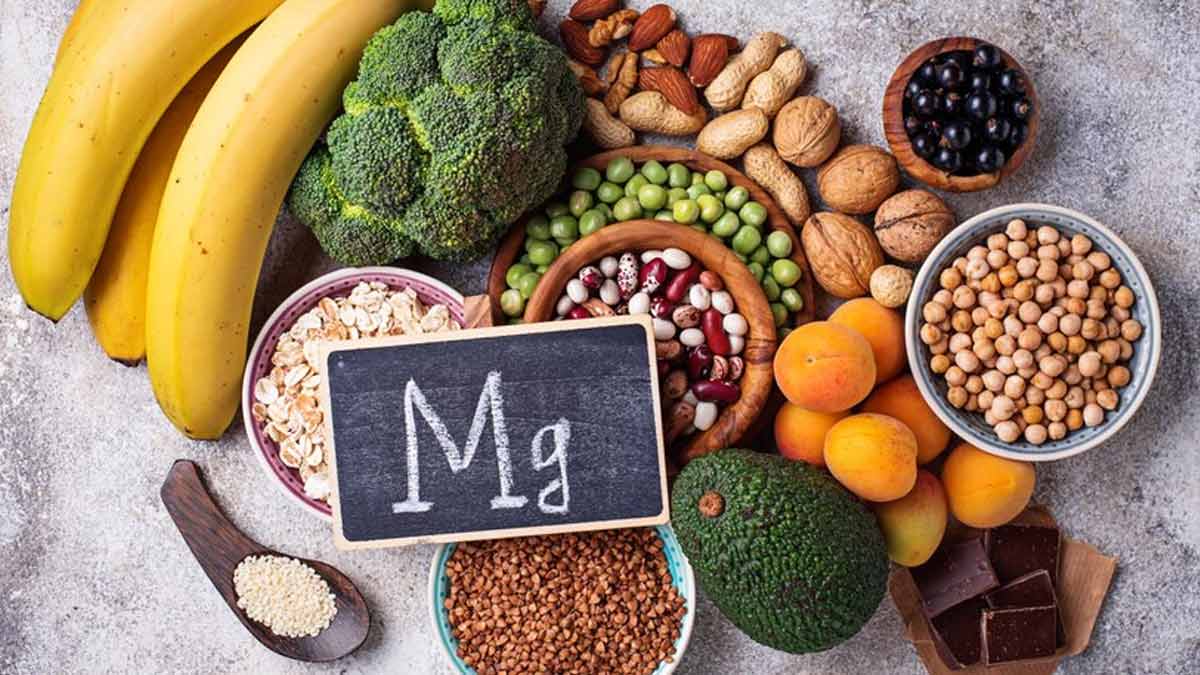
We all understand the importance of nutrients in our diet. But when it comes to their intake, we somehow fail to keep up with them.
While calcium, vitamin D, and iron are some of the most commonly discussed vitamins and minerals, magnesium and its benefits are often overlooked. Not only is the nutrient known for its role in maintaining muscle function, but it also aids in the absorption and metabolism of calcium and vitamin D, promoting strong and healthy bones. In addition, magnesium supports cardiovascular health by helping regulate blood pressure and maintaining a steady heart rhythm.
Table of Content:-
Therefore, low levels of magnesium in the body can lead to several health ailments. Of the many causes of the deficiency, magnesium malabsorption, which refers to the condition wherein the body is unable to absorb magnesium from foods, is one of them. Speaking with the OnlyMyHealth team, Dr Mukesh Mehra, Director-Internal Medicine, Max Super Speciality Hospital, Patparganj, explained the association and shared ways to avoid it.
Also Read: Magnesium Deficiency: Warning Signs Of Low Magnesium Levels
How Magnesium Malabsorption Contributes To Magnesium Deficiency

According to the National Institutes of Health Office of Dietary Supplements, approximately 30-40% of the dietary magnesium consumed is typically absorbed by the body. It is then stored in the bone mineral, and excess magnesium is excreted by the kidneys and the faeces, says a study published in the Clinical Kidney Journal.
Dr Mehra said, “Magnesium absorption from foods is pivotal in preventing deficiency as the body relies on dietary intake.”
He added, “Adequate absorption ensures a steady supply for processes like enzyme activation, muscle function, and energy production. Insufficient magnesium can lead to symptoms, such as muscle cramps, fatigue, and abnormal heart rhythms.”
Do’s And Don’ts That Affect Magnesium Absorption
To facilitate healthy absorption of magnesium, here are a few do’s and don’t that people should keep in mind to avoid deficiency. These include:
Do’s
- Consume a diverse range of magnesium-rich foods like leafy greens, nuts, seeds, and whole grains.
- Ensure sufficient vitamin D levels, as it aids in magnesium absorption.
- Maintain a balanced diet with appropriate levels of other minerals, promoting overall absorption.
Don'ts
- Limit excessive fibre intake during magnesium-rich meals, as it can hinder absorption.
- Reduce consumption of high-oxalate foods like spinach, as oxalates can bind to magnesium, reducing absorption.
- Avoid high calcium intake as both minerals compete for absorption in the intestines, leading to malabsorption. Dr Mehra recommended maintaining a proper balance between calcium and magnesium intake for optimal absorption of both minerals.
Also Read: 6 Signs Your Body is Low on Magnesium And Foods To Tackle The Deficiency
Signs Of Magnesium Deficiency

Common symptoms of magnesium deficiency include:
- Muscle cramps and spasms
- Fatigue, weakness and a general feeling of low energy
- Irregular heartbeat
- Numbness and tingling
- Muscle tremors and seizures
- Mood changes, anxiety, and depression
- Early osteopenia, poor bone density
- High blood pressure
- Migraine headaches
- Nausea and vomiting
- Loss of appetite
- Abdominal cramping
- Abnormal heart rhythm in infants
Magnesium-Rich Foods To Add To Your Diet

If you’re looking to increase your magnesium intake through foods, here are some sources that you can add to your diet:
- Leafy green vegetables like spinach, kale, Swiss chard, and other dark green leafy vegetables
- Nuts and seeds like almonds, cashews, peanuts, sesame seeds, and pumpkin seeds
- Whole grains, such as brown rice, quinoa, oatmeal, and whole wheat bread
- Legumes like beans, lentils, chickpeas, and peas
- Dairy products such as milk, yoghurt, and cheese
- Dark chocolate
- Bananas
- Avocado
Conclusion
Low magnesium levels can lead to muscle cramps, fatigue, and decreased nerve function, affecting overall health and well-being. Since it is crucial for bone health, heart rhythm regulation, and immune system support, it is important to address and prevent magnesium deficiency. This can be achieved by improving magnesium absorption. For that, you can consume a variety of magnesium-rich foods and limit excessive fibre, reduce high-oxalate foods like spinach, and maintain a balanced calcium-magnesium intake.
Also watch this video
How we keep this article up to date:
We work with experts and keep a close eye on the latest in health and wellness. Whenever there is a new research or helpful information, we update our articles with accurate and useful advice.
Current Version